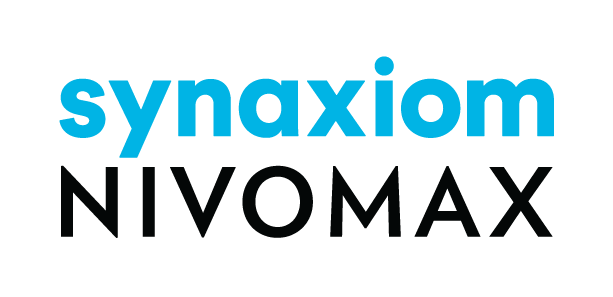NIVOMAX Release Deployment Plan for Customer Distributions
Published on June 21, 2024 ( Last Updated on December 24, 2025 ) | 5 min read
Estimated Timeline: 5 Weeks
Week 1: Planning and Preparation
Upgrade Release Kickoff
- Schedule a kickoff meeting with the client to discuss the scope, objectives, and timelines.
- Assign project roles and responsibilities.
Share Release Schedule and Plan
- Share the release schedule with the client, including dates, approval windows, and other relevant details.
Provide Release Documentation and Schedule Demo
- Collect detailed requirements and any specific customization needs from the client.
- Document any constraints or dependencies.
Perform Environment Review
- Review the client’s current environment and infrastructure.
- Identify any potential issues or upgrades needed to support the new software version.
Week 2-3: Preparing Distribution Release and Testing
UAT Form Preparation
- Create a UAT form to be submitted with the initial software release for the client.
- Ensure the form covers various test scenarios and expected outcomes.
Supporting and Help Content
- Prepare all related supporting and help content.
- Schedule and conduct a training session with the client’s SME teams to set expectations and demonstrate features.
Release Notes Document
- Produce a comprehensive release notes document detailing all new features, improvements, and bug fixes.
- Include screenshots or examples where necessary to clarify changes.
Perform Release Demo to SME
- Demonstrate the upgrade features to the client SMEs responsible for UAT and approval.
- Establish expectations, clarify constraints, and discuss workarounds if required.
Customer UAT Engagement
- Deploy the software to a UAT environment for the client.
- Encourage the client to test-drive the tools for real-life daily tasks to assess performance and familiarize themselves with the update.
Feedback Collection
- Gather detailed feedback from the client and document any issues or suggestions for improvement.
- Prioritize changes based on impact and feasibility.
Week 4: Evaluate Feedback and Pre-Production Preparation
Evaluate Feedback and Address Issues
- Internally evaluate feedback and address critical issues, if any.
Change Advisory Preparation
- Prepare the Change Advisory document for production deployment.
- Outline the planned changes, their impact on the system, and any associated risks.
Week 5: Deployment and Stabilization
Change Advisory Approval
- Obtain formal approval for the Change Advisory from all necessary parties.
Production Deployment
- Schedule and execute the production deployment.
- Follow established procedures to minimize downtime and disruption to the client’s operations.
Post-Deployment Stabilization
- Monitor the system closely for one week post-deployment.
- Identify and resolve any issues that may arise to ensure the update is stable and performs as expected.
Project Milestones
- Week 1: Release Kickoff
- Week 2-3: Preparation, Training, and UAT
- Week 4: Evaluate Feedback, Apply Changes, and Prepare Production Apps
- Week 5: Production Deployment and Stabilization Completed
Project Resources
- Delivery Supervisor: Oversees the release, ensuring timelines and deliverables are met.
- Development Team: Responsible for core software updates and customizations.
- Testing Team: Conducts internal testing and supports UAT.
- Client SME Teams: Engaged in training and UAT.
- Support Team: Provides ongoing support during the stabilization period.
Risk Management
- Risk: Potential delays in client feedback during UAT.
- Mitigation: Schedule regular check-ins with the client to ensure timely feedback.
- Risk: Issues discovered post-deployment.
- Mitigation: Have a rollback plan and a dedicated support team ready to address any critical issues.
This detailed project plan ensures a structured approach to upgrading and deploying the NIVOMAX software for the client’s customized distribution, with clear timelines, roles, and risk management strategies in place.
Sample Deployment and Upgrade Plan Template
| Week | Task | Description | Start Date | End Date | Approval Responsibility | Notes |
|---|---|---|---|---|---|---|
| Week 1 | Upgrade Release Kickoff | Schedule a kickoff meeting with the client, discuss scope, objectives, timelines, and assign roles. | Delivery Supervisor | |||
| Release Schedule Sharing | Share release schedule with the client, including dates, approval windows, and other relevant details. | Delivery Supervisor | ||||
| Provide Release Documentation and Schedule Demo | Collect requirements and customization needs from the client, document constraints or dependencies. | Delivery Supervisor | ||||
| Perform Environment Review | Review the client’s environment and infrastructure, identify potential issues or necessary upgrades. | Development Team | ||||
| Week 2-3 | UAT Form Preparation | Create a UAT form for the initial software release, covering various test scenarios and expected outcomes. | Testing Team | |||
| Supporting and Help Content | Prepare all related supporting and help content, conduct training sessions with client’s SME teams. | Support Team | ||||
| Release Notes Document | Produce a comprehensive release notes document detailing all new features, improvements, and bug fixes. | Development Team | ||||
| Perform Release Demo to SME | Demonstrate upgrade features to the client’s SMEs, establish expectations, and clarify constraints. | Delivery Supervisor | ||||
| Customer UAT Engagement | Deploy software to a UAT environment, encourage client to test tools in real-life scenarios. | Client SME Teams | ||||
| Feedback Collection | Gather detailed feedback from the client, document issues or suggestions, prioritize changes. | Delivery Supervisor | ||||
| Week 4 | Evaluate Feedback and Address Issues | Internally evaluate feedback, address critical issues if any. | Development Team | |||
| Change Advisory Preparation | Prepare Change Advisory document for production deployment, outline planned changes and risks. | Delivery Supervisor | ||||
| Week 5 | Change Advisory Approval | Obtain formal approval for Change Advisory from all necessary parties. | Delivery Supervisor | |||
| Production Deployment | Schedule and execute the production deployment, follow procedures to minimize downtime. | Delivery Supervisor, Development Team | ||||
| Post-Deployment Stabilization | Monitor system closely for one week post-deployment, identify and resolve issues. | Support Team |

